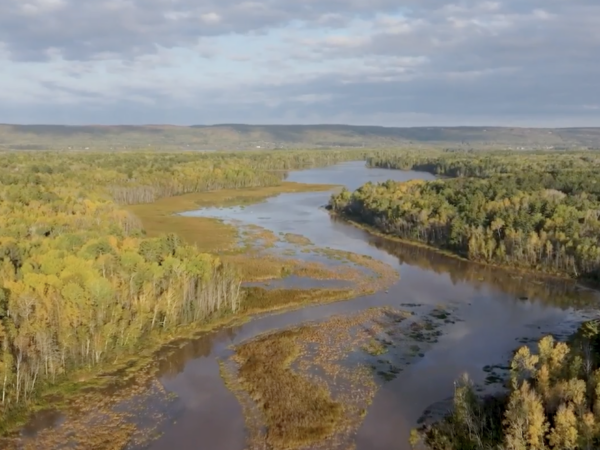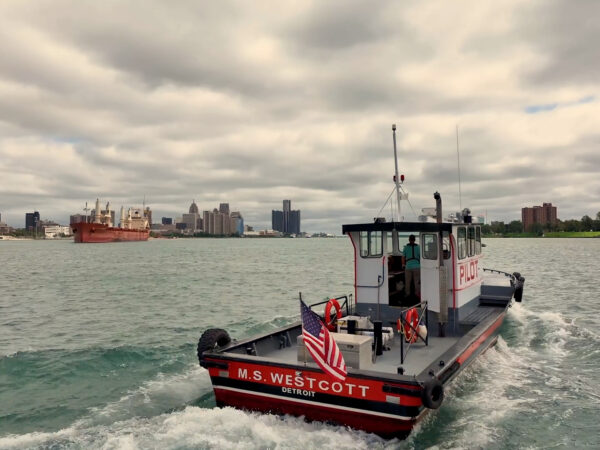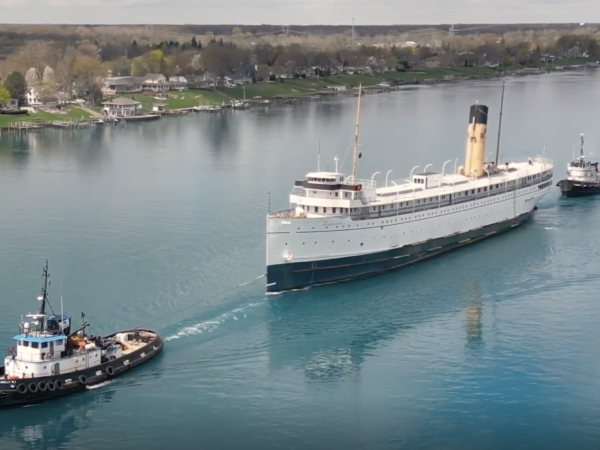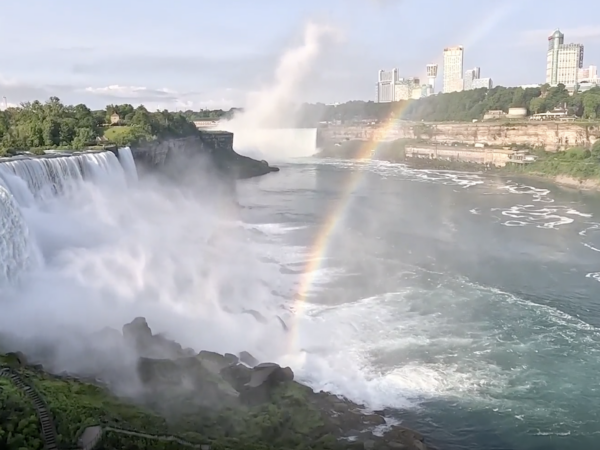IN THIS EPISODE:
In this episode of Great Lakes Now, a look at what goes into Michigan DNR’s work to raise and release 40,000 Great Lakes muskellunge each year, making solar power in snow climates, and what a warm winter means for the Great Lakes region.
GREAT LAKES LEARNING:
Explore this month’s hands-on lesson plans designed to help your middle schoolers understand the Great Lakes — all at home or in the classroom. They’re aligned to education standards AND free to download.
Lesson Plans
Have a question about the Great Lakes or life in the region?
Ask Great Lakes Now, and if we can answer it, we might loop it into our coverage so others can learn too.
Submit Your Question
When to Watch?
Check your local station for when Great Lakes Now is on in your area.
Premieres on DPTV
Monday, February 26, at 7:30 PM
STATIONS CARRYING THE SERIES
DPTV
Detroit, Michigan
WEAO
Akron, Ohio
WNEO-TV
Alliance, Ohio
WCML-TV
Alpena, Michigan
WDCP-TV
Bad Axe, Michigan
BCTV
Bay County, Michigan
WBGU-TV
Bowling Green, Ohio
WNED-TV
Buffalo, New York
WCMV-TV
Cadillac, Michigan
WTTW-TV
Chicago, Illinois
WVIZ-TV
Cleveland, Ohio
WKAR-TV
East Lansing, Michigan
WQLN-TV
Erie, Pennsylvania
WCMZ-TV
Flint, Michigan
WGVU-TV
Grand Rapids, Michigan
WPNE-TV
Green Bay, Wisconsin
WGVK-TV
Kalamazoo, Michigan
WHLA-TV
La Crosse, Wisconsin
WHA-TV
Madison, Wisconsin
WNMU-TV
Marquette, Michigan
WHWC-TV
Menomonie-Eau Claire, Wisconsin
WMVS-TV
Milwaukee, Wisconsin
WCMU-TV
Mt. Pleasant, Michigan
WLEF-TV
Park Falls, Wisconsin
WNIT-TV
South Bend, Indiana
WCNY-TV
Syracuse, New York
WGTE-TV
Toledo, Ohio
WDCQ-TV
University Center, Michigan
WNPI-TV
Watertown, New York for Ontario signal
WPBS-TV
Watertown, New York for U.S. signal
WHRM-TV
Wausau, Wisconsin
Stocking the Mighty Great Lakes Muskie
SEGMENT 1 | Wyandotte, MI; Mattawan, MI
Every state bordering the Great Lakes, as well as Ontario and Quebec, raises and stocks muskellunge. These collective efforts speak to the significance of one of the Great Lakes’ largest apex predators.
Great Lakes Now joined the Michigan Department of Natural Resources as they captured adult muskies on the Detroit River and kept the cameras rolling through the hatchery journey from hatchlings to the release of fall fingerlings.
Raising tens of thousands of cannibalistic fish in small hatchery tanks is one of the biggest challenges for Matt Hughes who manages the Wolff Lake State Fish Hatchery in Mattawan, Michigan.
“Muskie, in my opinion, are one of the most challenging species to rear, they like a live diet,” Hughes said.
Any fingerling that skips a meal can fall just far enough behind to risk being eaten by their tankmates. The hatchery staff’s goal is to get as many fingerlings as possible to a size large enough to be moved to outdoor ponds, where they can start chasing minnows instead of each other.
Here is other Great Lakes Now work on muskie:
Can Solar Panels Even Work Here?
SEGMENT 2 | Houghton, MI
To hit ambitious targets for reducing carbon emissions, power providers are embracing solar energy. But in the Great Lakes region, winter’s short days, gray skies, and snow can make the sun a rarity. Is it even possible to efficiently make solar power in these conditions?
According to Dr. Ana Dyreson, Assistant Professor at Michigan Technological University, the ideal conditions for solar panels are clear skies and moderate temperatures. “But that doesn’t mean that we can’t generate in the winter,” said Dyreson. “You’re still getting the reflectivity in the atmosphere and anything around you, including snow. So you are still getting some lower power output.”
But it doesn’t take much snow to keep solar panels from generating electricity, only a couple of centimeters. Dyreson and her team work out of the Solar Regional Test Center in Houghton, Michigan, studying questions about how solar panels operate in the winter and testing methods to help them perform better during snowy weather.
The Catch: News about the Lakes You Love
SEGMENT 3 | Great lakes watershed
This segment – The Catch – in our award-winning PBS program will keep you in the know. This month, learn about the future of nuclear energy in Michigan, how some researchers are looking for life-saving pharmaceuticals in Lake Erie’s toxic algal blooms, and an excerpt from “Waves of Change” featuring Brenda Coley, Co-Executive Director of Milwaukee Water Commons.
First, a draft report was released by Michigan’s Public Service Commission that says if the state wants to meet its goal of being carbon free by 2040, it will need to invest in new nuclear energy. Sheri McWhirter covered the story for MLive. “For many climate action advocates and even energy industry proponents, yes, nuclear energy is clean energy. It comes without planet warming carbon emissions,” said McWhirter. “But there are those in the environmental justice realm who have equally valid concerns about the harmful effects of uranium mining.”
Next, scientists are exploring toxic algal blooms as a potential source of life-saving pharmaceutical drugs. Milwaukee Journal Sentinal’s Caitlin Looby reported on the research taking place on Lake Erie. “A lot of pharmaceutical drugs, like anti-cancer drugs and antibiotics, they actually come from nature,” said Looby. The scientists have successfully found pharmaceuticals from marine life in other parts of the world, but believe the Great Lakes are a new frontier for their research.
Lastly, an excerpt from GLN’s web series, “Waves of Change,” which highlights conversations with a variety of people engaged in environmental justice throughout the Great Lakes. This month, a conversation with Brenda Coley, Co-Executive Director of the urban network and non-profit organization Milwaukee Water Commons. The group has a Water City agenda that takes an intersectional approach to laying out climate issues and proposed solutions for Wisconsin’s largest city. “What we’ve tried to do is have programming that addresses each of those issues,” said Coley.
Featured Articles
Digital Credits
The Great Lakes Now Series is produced by Rob Green and Anna Sysling.





















